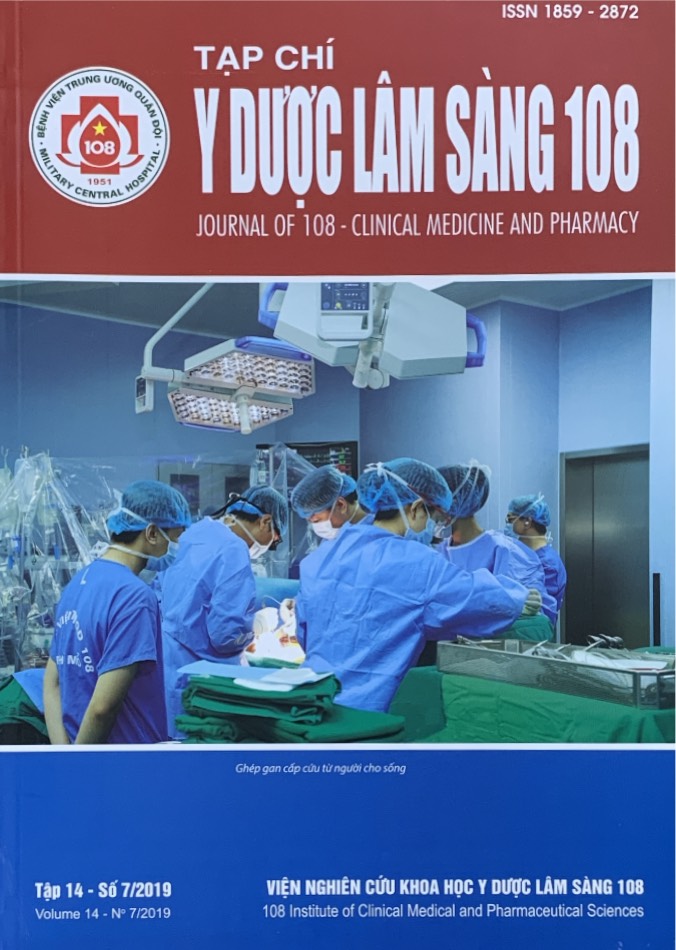The image findings of branchial plexus injuries on CT myelography, MRI and electrodiagnosis
Main Article Content
Keywords
Abstract
Objective: To investigate the image findings of branchial plexus injuries on CT myelography, MRI and electrodiagnosis. Subject and method: The study was performed on 40 patients with trauma history and clinically suspected brachial plexus lesions, which were then diagnosed by CT myelography and MRI at the Department of Diagnostic Imaging, 108 Military Central Hospital, electrically diagnosed at Department of Functional Explorations, Hanoi Medical University Hospital and operated at Institute of Trauma and Orthopedics, 108 Military Central Hospital during nearly 2 years, from May 2015 to February 2017. It is a prospective, cross-sectional descriptive study. Result: CT myelography can diagnose complete and partial root avulsions with 5 levels according to Nagano classification. MRI can detect some types of damage such as root avulsion, rupture, edema of the roots and trunks, electrodiagnosis can detect preganglionic and postganglionic damage, complete or partial root lesions. Conclusion: CT myelography, MRI and electrodiagnosis are useful diagnostic imaging methods for brachial plexus lesions.
Article Details
References
2. Nagano A, Ochiai N, Sugioka H et al (1989) Usefulness of myelography in brachial plexus injuries. J Hand Surg Br 14(1): 59-64.
3. Carvalho GA, Nikkhah G, Matthies C et al (1997) Diagnosis of root avulsions in traumatic brachial plexus injuries: Value of computerized tomography myelography and magnetic resonance imaging. J Neurosurg 86(1): 69-76.
4. Garozzo D, Basso E, Gasparotti R et al (2013) Brachial plexus injuries in adults: Management and repair strategies in our experience. Results from the analysis of 428 supraclavicular palsies. Neurol Neurophysiol journal 5(1): 1-8.
5. Qin BG, Yang JT, Yang Y et al (2016) Diagnostic Value and surgical implications of the 3D DW-SSFP MRI On the management of patients with brachial plexus injuries. Sci Rep 6: 35999.
6. Moghekar AR, Moghekar AR, Karli N et al (2007) Brachial plexopathies: Etiology, frequency, and electrodiagnostic localization. J Clin Neuromuscul Dis 9(1): 243-247.
7. Barman A, Chatterjee A, Prakash H et al (2012) Traumatic brachial plexus injury: electrodiagnostic findings from 111 patients in a tertiary care hospital in India. Injury 43(11): 1943-1948.
8. Mansukhani KA (2013) Electrodiagnosis in traumatic brachial plexus injury. Ann Indian Acad Neurol 16(1): 19-25.
9. Kaiser R, Waldauf P, Haninec P (2012) Types and severity of operated supraclavicular brachial plexus injuries caused by traffic accidents. Acta Neurochir (Wien) 154(7): 1293-1297.
 ISSN: 1859 - 2872
ISSN: 1859 - 2872
